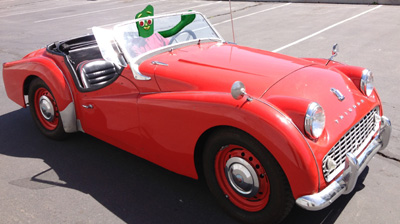
Hmm...I'm trying to remember...I seem to recall reading on one of these forums, accounts of failures of rover diffs due to movement of the ring gear. I can't remember what the root cause of the movement was--replacement ring gears of incorrect thickness maybe?? I don't really remember, but this movement caused failures of the bolts due to the excessive shear loads put on them by the floppy ring gear during starts and during transitions from power loading to engine braking (deceleration during coasting).
Based on the evidence you've found, I would strongly recommend pulling the diff (if it's a rover-type diff) or removing the rear cover (Salisbury diff) and making sure all the bolts are present and correctly torqued (and locked) before you drive farther away from your house than your care to walk back.
--Mark
1973 SIII 109 RHD 2.5NA Diesel
0-54mph in just under 11.5 minutes
(9.7 minutes now that she's a 3-door).








 Reply With Quote
Reply With Quote





